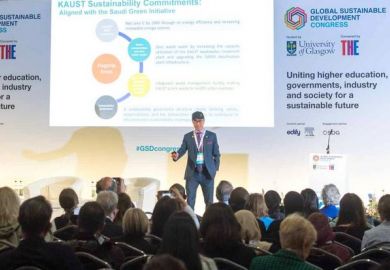The US’ 156-year-old National Academy of Sciences is poised to change its membership rules to allow the expulsion of sexual harassers.
Academy members took a preliminary vote endorsing a change in bylaws to allow the removal of members – generally a lifetime status – who violate a new code of conduct covering offences that include sexual harassment.
The vote in favour of the shift at the annual academy business meeting in Washington – reportedly favoured by about 95 of the approximately 100 members in attendance – will be finalised in coming months in a vote by post and online among all 2,347 current members.
The academy – membership of which is considered a major marker of career accomplishment for US scientists – also announced the election of 100 new members, with women accounting for 40 of them: a new record.
The new policy allows for a removal of membership if it’s supported by a two-thirds vote of the academy’s governing council. It was backed by Marcia McNutt, who in 2016 became the first woman to lead the organisation.
The impending shift from a guaranteed lifetime election follows years of member lobbying in response to widespread evidence – including a report last year by the three US national science academies – documenting extensive sexual harassment in US science.
Activists leading such work include BethAnn McLaughlin, an assistant professor of neurology and pharmacology at Vanderbilt University, who began a petition last year demanding the academy expel sexual harassers.
Another researcher, Julie Libarkin, a professor of earth and environmental sciences at Michigan State University, maintains a list of hundreds of reports of sexual abusers that includes several academy members.
The pending policy change would apply only to the National Academy of Sciences. But an NAS spokeswoman said the other two national science academies – the National Academy of Medicine and the National Academy of Engineering – are expected to adopt similar provisions once the NAS settles on its policy.
As for membership, the largest gains for women are being seen in the life sciences, where the pool of women is already large, and in the environmental sciences, Professor McNutt said. Women still remain heavily underrepresented in engineering sciences, she acknowledged.
But given the historical deficits across all fields, Professor McNutt estimated that women are probably still many years if not decades away from catching up in overall NAS membership levels.
Women currently account for about 18 per cent of academy members. They represented about 30 per cent of last year’s entering class, after many years where their share ran below 20 per cent.
Dr McLaughlin may have trouble joining them. She was denied tenure in November 2017 at the Vanderbilt University School of Medicine, and has attributed the action to her activism over sexual harassment – including serving as a witness against a colleague later cleared on a sexual harassment charge.




